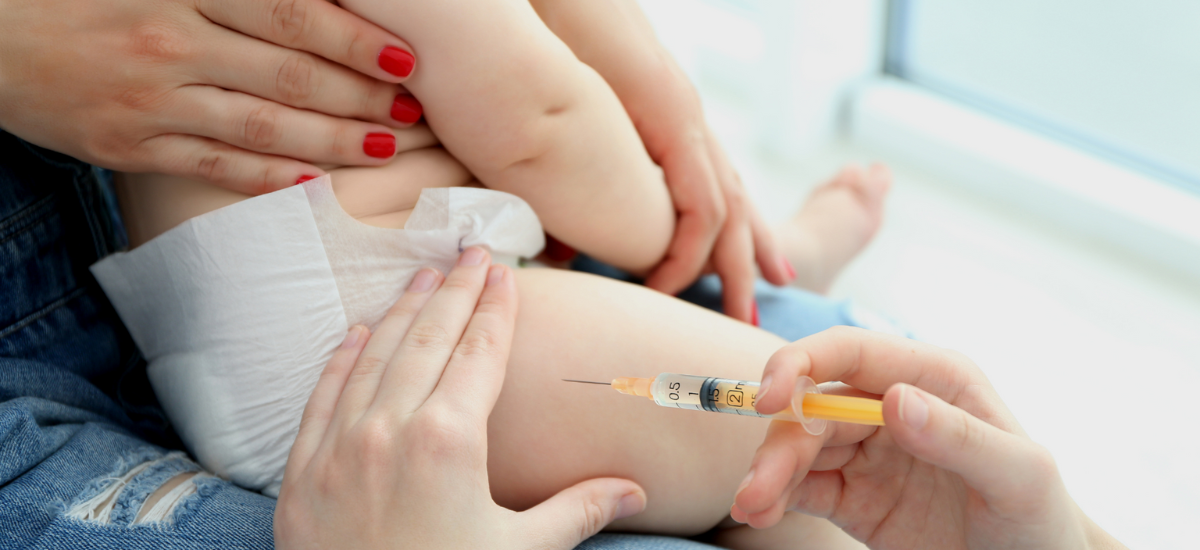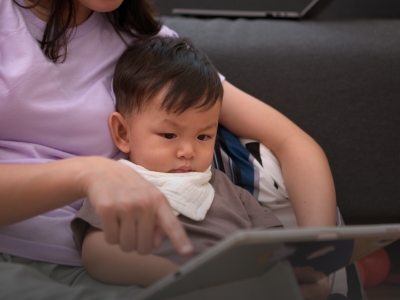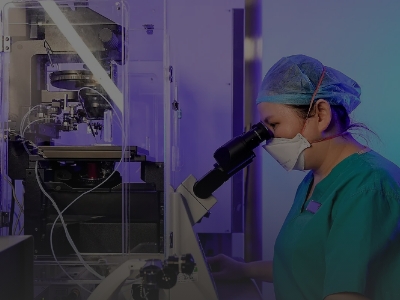Published on 5 December 2022
We break down the key information to note when it comes to childhood vaccinations.
The Covid-19 pandemic has spotlighted vaccinations; and its crucial role in reducing the severity of a disease, as well as minimising the risk of transmission.
Most Singaporeans, however, are no stranger to vaccinations. After all, barring any extenuating circumstances such as allergies, every child in Singapore has to be vaccinated as per the guidelines of the National Childhood Immunisation Schedule (NCIS) below.
| Vaccine | Age | Level of importance | Boosters needed |
| Tuberculosis | Birth | Priority | None needed |
| Hepatitis B | Birth - 1st dose 1 month - 2nd dose 5 - 6 months - 3rd dose | Priority (as given in combination) | None needed |
| Diphtheria, Tetanus, and Pertussis (DTaP) vaccine | 2 months – 1st dose 4 months – 2nd dose 6 months – 3rd dose | Diphtheria mandatory by law (as given in combination) | 18 months – 1st booster 10-11 years – 2nd booster |
| Haemophilus Influenzae Type B vaccine (Hib) | 2 months – 1st dose 4 months – 2nd dose 6 months – 3rd dose | Priority (as given in combination) | 18 months |
| Pneumococcal Conjugate Vaccine (PCV) | 4 months – 1st dose 6 months – 2nd dose | Recommended | 12 months (PPSV23 for special conditions in children aged 2-17 years) |
| Inactivated Poliovirus vaccine (IPV) | 12 months – 1st dose 18 months – 2nd dose | Priority (as given in combination) | None needed |
| Measles, Mumps, and Rubella (MMR) vaccine | 12 months – 1st dose 18 months – 2nd dose | Measles mandatory by law (as given in combi) | None needed |
| Chicken Pox | 12 months – 1st dose 18 months – 2nd dose | Optional – Recommended to obtain | None needed |
| Rota Virus | 6 weeks to 16 weeks – 1st dose 10 weeks to 24 weeks – 2nd dose | Optional – Recommended to obtain | None needed |
Dr Abiramy D/O Anathan, Family Physician, Associate Consultant, National University Polyclinics (NUP), explained that childhood immunisation is an important step of the way to protect children and others around them against diseases in the long-term.
“There is heightened evidence to prove that if an adequate number of children are immunised against a particular disease, it can aid in reducing the risk of that disease spreading to others. Immunisation is indeed one of the most effective ways to prevent serious illnesses and deaths in children,” Dr Abiramy said.
Under the Infectious Diseases Act (IDA), the vaccinations for measles and diphtheria are compulsory for children – and for a good reason.
“Measles and Diphtheria vaccines are mandatory by law prior to a child starting Primary school education, as both diseases are highly contagious and can be fatal if a child contracts either,” Dr Abiramy elaborated. “Measles, especially in a young child, can cause severe lung and brain infection (meningitis), which often leads to permanent brain damage or death.
“Diphtheria, on the other hand, is a bacterial infection that causes fever and sore throat leading to difficulties in breathing and swallowing, as well as heart or kidney failure.”
On the opposite end of the spectrum, the vaccines for Rotavirus and Hepatitis A are not mandatory. Nonetheless, they are highly recommended, as these diseases can have an adverse effect on young children.
For example, infants who contract a rotavirus infection may succumb to severe vomiting and diarrhoea and often may require hospitalisations.
Meanwhile, the Hepatitis A virus can cause severe liver disease, and, as with most viral infections, will often require supportive therapy as part of its management.
Why children need vaccinations
Upon birth, a baby’s immune system is immature. Therefore, exposure to infectious diseases may pose a deleterious threat to a baby’s health. For this reason, it is highly recommended to immunise a child during its infancy.
“A vaccine is a biological material that is programmed to mimic a harmful pathogen, and this in turn trains the body’s immune system to defend itself from them,” said Dr Abiramy. “Upon receiving a vaccine, the immune system will attack it by producing antibodies. This exposure is then stored in the immune system’s memory cells.
“When the child is exposed to the same pathogen months or years later, the immune system is primed and remains guarded to fight and save the host.”
Immunisation risks of childhood vaccinations
While vaccinations for children are generally encouraged, there are some situations where it is not recommended.
“A child who is recuperating from an acute illness should postpone the immunisation till at least two weeks after,” Dr Abiramy said. “Vaccinations are also not suitable for children who have had a serious allergic reaction to a previous dose of vaccine, or in children with active malignancy, or are on immunosuppressive medications.
“It is advisable to have a discussion with the family doctor or paediatrician prior to deciding to vaccinate your child.”
In most cases, minor side effects may occur with childhood vaccinations, such as:
Pain or redness in the injection site
Fever
Irritability
Sleepiness
Lethargy
While these are common symptoms that can be remedied at home with symptomatic medications, immediate medical attention should be sought in the event of rashes, or swelling of the eyes and/or lips within the first 30 minutes after vaccination.
Keeping track of childhood vaccinations
Every vaccination that a child receives – be it at a clinic, or at a hospital – is recorded by the National Immunisation Registry (NIR).
The NIR plays an active role in monitoring and ensuring that each child receives the required immunisations at the appropriate time – if a dose is missed, a reminder letter is sent to their parents or caregiver.
In addition, in a bid to minimise the cost of vaccination, the Ministry of Health (MOH) introduced combined vaccines for children. This means that a child will be immunised against multiple diseases with just one vaccine shot.
“MOH’s efforts to make immunisations affordable led to the introduction of the 6-in-1 combination vaccine (DTaP/IPV/Hib/Hep B), MMRV (mumps/measles/rubella/varicella) vaccine and PCV 13 vaccine to be fully subsidised as part of the NCIS,” Dr Abiramy shared.
“This effort enabled an improved uptake of the childhood immunisations and in turn improved herd immunity.”
In consultation with Dr Abiramy D/O Anathan, Family Physician, Associate Consultant, National University Polyclinics (NUP).



